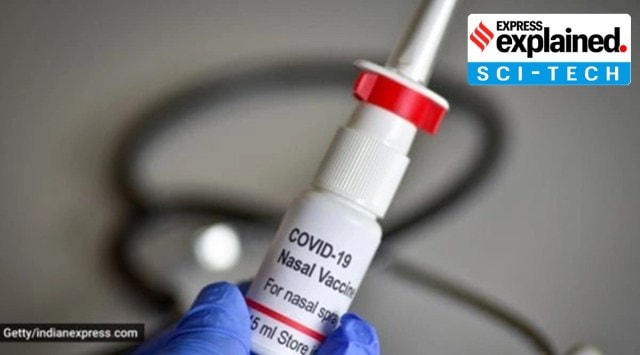- India
- International
Nasal vaccine gets emergency use nod, how will it help combat Covid-19?
Intranasal vaccines help overcome potential difficulties with mass vaccination and reduce the cost by doing away with the need for needles and syringes. But how do such vaccines work? We explain.
 Intranasal vaccines are also expected to cut down on the dependence on various trained personnel to administer the vaccine, according to experts. (Representational/ Getty)
Intranasal vaccines are also expected to cut down on the dependence on various trained personnel to administer the vaccine, according to experts. (Representational/ Getty)Bharat Biotech’s COVID-19 recombinant nasal vaccine has been approved by the Ministry of Health’s Central Drugs Standard Control Organisation for primary immunisation of those aged 18 years and above in emergency situations. The information was shared on Twitter by Health Minister Mansukh Mandaviya.
What this means is that for protecting people against novel coronavirus — a pathogen that invades the airway — an intramuscular shot isn’t now the only strategy available.
What is a nasal vaccine?
Vaccines are usually given through different routes, with the most common being injectable shots delivered into the muscles (intramuscular) or the tissue just between the skin and the muscles (subcutaneous). There are also other routes of delivery, especially in some vaccines for infants, that include administering the liquid solution orally instead of injecting. In the intranasal route, the vaccine is sprayed into the nostrils and inhaled.
Many viruses, including the coronavirus, enter the body through mucosa — wet, squishy tissues that line the nose, mouth, lungs and digestive tract — triggering a unique immune response from cells and molecules there.
Experts believe an intranasal vaccine can act against the virus from the time it tries to break the body’s barrier. Instead, intramuscular vaccines generally fail at eliciting this mucosal response, as they rely on immune cells mobilised from elsewhere in the body flocking to the site of infection.

How will a nasal vaccine work?
In the case of both delivery routes, vaccines trigger a response in the blood.
B cells, for example, would churn out antibodies – including a particularly potent disease-fighter called IgG – to roam the body in search of the virus. Other cells, called T cells, would either help B cells produce antibodies or seek out and destroy the infected cells.
But vaccines that are injected through the nose or mouth also tap into another set of immune cells that hang around mucosal tissues. The B cells that reside there can make another type of antibody, called IgA, that plays a key role in destroying the airway pathogens. In addition, the T cells that are residing nearby will be able to memorise the pathogens that it encountered and will lifelong scout the areas where these were first encountered.
Importance of vaccines delivered through nasal, oral route
These vaccines aim to overcome potential difficulties with mass vaccination and reduce the cost by doing away with the need for needles and syringes. Intranasal vaccines are also expected to cut down on the dependence on various trained personnel to administer the vaccine, according to experts.
“One attraction with the intranasal vaccine is that it’s very simple to use — you just squirt it into your nose — and it’s something that can be self-administered in pandemics and outbreaks,” Dr Davinder Gill, former CEO of Hilleman Laboratories had earlier told The Indian Express.
Experts, like vaccine scientist Dr Gagandeep Kang, believe that a nasal vaccine has a likelihood of lower safety events as “it is going into a mucosal surface, it will likely be restricted”.
However, according to experts, there is very little evidence to back the effectiveness of this route of delivery so far and, save for some flu vaccines, attempts to deliver vaccines like this have not been successful.
More Explained
Must Read
EXPRESS OPINION
Apr 19: Latest News
- 01
- 02
- 03
- 04
- 05








































